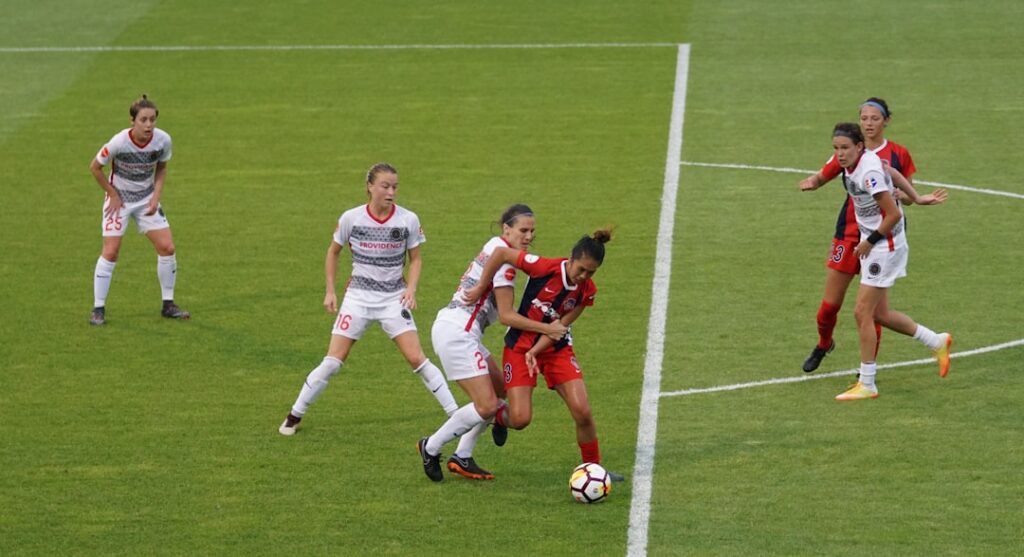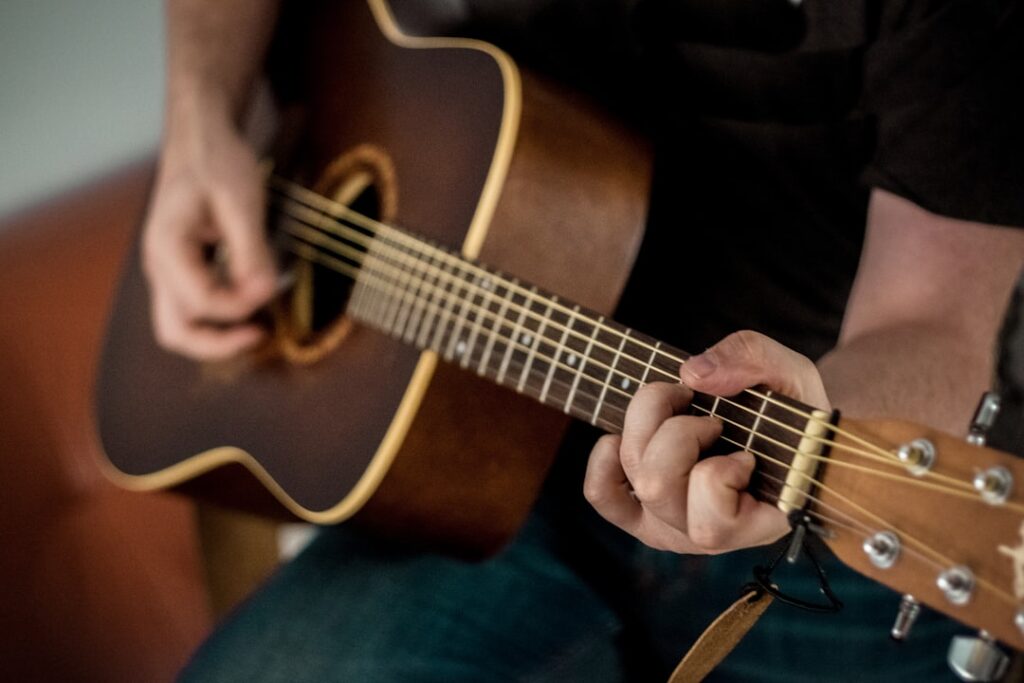When it comes to choosing the right cleats for your sport, it’s important to consider the specific needs and requirements of the game you’ll be playing. Different sports have different demands on your footwear, and selecting the right cleats can make a significant difference in your performance on the field. For example, if you’re a soccer player, you’ll want to look for soccer cleats that are designed for quick movements, agility, and ball control. On the other hand, if you’re a football player, you’ll need cleats that provide stability, traction, and support for quick bursts of speed and sudden stops. It’s also important to consider the playing surface when choosing cleats. For example, soccer cleats for firm ground have molded studs that provide traction on dry, natural grass, while soccer cleats for soft ground have longer, detachable studs for wet, muddy fields. Understanding the specific requirements of your sport and playing surface will help you make an informed decision when choosing the right cleats for your needs.
When it comes to choosing the right cleats for your sport, it’s essential to consider the specific features that will enhance your performance on the field. For example, if you’re a baseball player, you’ll want to look for cleats with a toe cleat that provides traction and stability when running bases. Additionally, baseball cleats with metal spikes are ideal for providing traction on dirt and grass fields. On the other hand, if you’re a lacrosse player, you’ll need cleats with ankle support and traction for quick lateral movements and sudden stops. It’s also important to consider the fit and comfort of the cleats, as well as any specific features that may be beneficial for your position on the field. For example, linemen in football may require cleats with extra ankle support and durability to withstand the physical demands of their position. By considering these specific features and requirements, you can ensure that you choose the right cleats for your sport that will enhance your performance and keep you comfortable on the field.
Key Takeaways
- Choose cleats specifically designed for your sport to optimize performance and safety.
- Proper fit and sizing are crucial for comfort and to prevent injury while wearing cleats.
- Different cleat materials offer various benefits, so consider the playing surface and your playing style when selecting cleats.
- Regular maintenance and care will extend the lifespan of your cleats, ensuring they perform at their best for longer.
- Cleat accessories can enhance performance and provide additional support, so consider adding them to your gear.
- Incorporate specific training and drills to improve performance while wearing cleats and adapt to the unique demands of your sport.
- Invest in high-quality cleat insoles and inserts to maximize comfort and support, reducing the risk of foot fatigue and injury.
Proper Fit and Sizing for Optimal Performance
Proper fit and sizing are crucial when it comes to selecting the right cleats for your sport. Ill-fitting cleats can lead to discomfort, blisters, and even injuries on the field. When trying on cleats, it’s important to ensure that there is enough room in the toe box to prevent cramping and discomfort during play. Additionally, the cleats should provide a snug fit around the heel and midfoot to prevent slippage and instability during quick movements. It’s also important to consider the width of the cleats, as some styles may be better suited for narrow or wide feet. When trying on cleats, it’s helpful to wear the same socks that you would wear during play to ensure an accurate fit. Taking the time to find the right size and fit will not only enhance your comfort on the field but also improve your overall performance.
Proper fit and sizing are essential for optimal performance and comfort on the field. When selecting cleats, it’s important to consider any specific features or adjustments that may be necessary to achieve the perfect fit. For example, some cleats come with adjustable lacing systems or straps that allow for a customized fit around the foot and ankle. Additionally, some brands offer different width options to accommodate various foot shapes and sizes. It’s also important to consider any specific foot conditions or orthotic needs that may require additional support or cushioning in the cleats. By taking the time to find the right size and fit for your cleats, you can prevent discomfort, blisters, and injuries on the field while maximizing your performance and agility.
Understanding Different Cleat Materials and their Benefits
Cleats are made from a variety of materials, each with its own unique benefits and advantages. Understanding the different cleat materials can help you make an informed decision when selecting the right footwear for your sport. For example, leather cleats are known for their durability, comfort, and ability to mold to the shape of your foot over time. Additionally, leather cleats provide excellent touch and feel on the ball for sports like soccer and rugby. On the other hand, synthetic materials are often lighter in weight and provide enhanced flexibility and breathability. Synthetic cleats are also easier to clean and maintain compared to leather options. Some cleats also feature mesh or knit uppers that provide a sock-like fit and enhanced breathability for added comfort during play. Understanding the benefits of different cleat materials can help you choose the right option for your specific needs and preferences.
When it comes to selecting cleats for your sport, it’s important to consider the specific benefits of different materials to enhance your performance on the field. For example, some cleats feature carbon fiber plates that provide lightweight support and responsiveness for quick movements and acceleration. Additionally, some cleats incorporate rubber or TPU outsoles that offer superior traction and stability on various playing surfaces. It’s also important to consider any specific weather conditions or playing surfaces that may require water-resistant or weatherproof materials to keep your feet dry and comfortable during play. By understanding the benefits of different cleat materials, you can make an informed decision when selecting footwear that will enhance your performance and comfort on the field.
Cleat Maintenance and Care Tips for Longevity
| Tip | Description |
|---|---|
| Clean after each use | Remove dirt and debris to prevent damage |
| Inspect for wear | Check for signs of wear and tear regularly |
| Replace worn cleats | Replace cleats when they are worn down |
| Use grease or lubricant | Apply grease or lubricant to moving parts |
| Store in a dry place | Avoid moisture to prevent rust and corrosion |
Proper maintenance and care are essential for prolonging the life of your cleats and ensuring optimal performance on the field. After each use, it’s important to remove any dirt or debris from the cleats using a soft brush or cloth to prevent damage to the materials. Additionally, allowing your cleats to air dry after each use can help prevent odor and bacteria buildup inside the shoes. It’s also important to store your cleats in a cool, dry place away from direct sunlight to prevent damage to the materials. Regularly inspecting your cleats for any signs of wear or damage can help you address any issues early on and prevent further damage. By taking the time to properly maintain and care for your cleats, you can prolong their longevity and ensure that they continue to provide optimal performance on the field.
Cleat maintenance is crucial for preserving the quality and performance of your footwear over time. It’s important to regularly clean your cleats after each use to remove dirt, mud, and debris that can cause damage to the materials. Additionally, applying a water-resistant spray can help protect your cleats from moisture and keep them dry during play. It’s also important to inspect the studs and outsoles regularly for any signs of wear or damage and replace them as needed to maintain traction and stability on the field. Proper storage is also essential for preserving the shape and integrity of your cleats. Storing them in a ventilated bag or container can help prevent odor and bacteria buildup while keeping them protected from external elements. By following these maintenance and care tips, you can prolong the life of your cleats and ensure that they continue to provide optimal performance on the field.
Enhancing Performance with Cleat Accessories
In addition to selecting the right cleats for your sport, there are various accessories available that can enhance your performance on the field. For example, adding traction pads or grip enhancers to your cleats can improve traction and stability during quick movements and sudden stops. Additionally, wearing ankle braces or supports can provide added stability and protection for players with a history of ankle injuries or instability. Some athletes also benefit from wearing moisture-wicking socks that keep their feet dry and comfortable during play. Another popular accessory is lace locks or straps that help keep your laces secure during play to prevent tripping or interference with your performance. By incorporating these accessories into your gear, you can enhance your performance on the field while staying comfortable and protected.
Cleat accessories can play a significant role in enhancing your performance and comfort on the field. For example, wearing compression sleeves or socks can improve circulation and reduce muscle fatigue during play while providing added support for your calves and ankles. Additionally, using insoles or inserts designed specifically for cleats can provide extra cushioning and support for players with high arches or foot conditions. Some athletes also benefit from wearing toe caps or guards to protect their toes from impact during aggressive play. It’s also important to consider any specific needs or preferences you may have when selecting accessories for your cleats, such as added padding or protection in high-impact areas. By incorporating these accessories into your gear, you can enhance your performance on the field while staying comfortable and protected.
Training and Drills to Improve Performance in Cleats

Training and drills are essential for improving your performance in cleats and maximizing your agility, speed, and endurance on the field. Incorporating agility ladder drills into your training routine can improve footwork, coordination, and quickness in tight spaces while wearing cleats. Additionally, practicing cone drills can help improve acceleration, deceleration, and change of direction while wearing footwear that provides traction and stability. It’s also important to incorporate sport-specific drills into your training routine that mimic game-like situations while wearing cleats to improve muscle memory and performance under pressure. Strength training exercises such as squats, lunges, and calf raises can also help improve lower body strength and stability while wearing cleats. By incorporating these training methods into your routine, you can improve your performance in cleats while enhancing your overall athleticism on the field.
Training in cleats is essential for improving your performance on the field and maximizing your agility, speed, and endurance during play. Incorporating plyometric exercises into your training routine can improve explosive power, speed, and vertical leap while wearing footwear that provides support and stability. Additionally, practicing cutting drills can help improve agility, balance, and change of direction while wearing cleats designed for quick movements on various playing surfaces. It’s also important to incorporate sport-specific conditioning drills into your training routine that simulate game-like situations while wearing cleats to improve endurance and performance under pressure. Flexibility exercises such as dynamic stretching or yoga can also help improve range of motion and reduce the risk of injury while wearing cleats. By incorporating these training methods into your routine, you can improve your performance in cleats while enhancing your overall athleticism on the field.
Maximizing Comfort and Support with Cleat Insoles and Inserts
Maximizing comfort and support is essential when it comes to wearing cleats for extended periods of time during play. Using custom orthotic insoles designed specifically for cleats can provide added cushioning, arch support, and stability for players with foot conditions or high arches. Additionally, using gel or foam inserts in high-impact areas such as the heel or forefoot can help reduce pressure points and absorb shock during aggressive play. Some athletes also benefit from using heel cups or pads to provide added cushioning and support for players with heel pain or plantar fasciitis. It’s important to consider any specific needs or preferences you may have when selecting insoles or inserts for your cleats to ensure maximum comfort and support during play.
Maximizing comfort and support is crucial for maintaining peak performance on the field while wearing cleats. Using moisture-wicking insoles designed specifically for athletic footwear can help keep your feet dry and comfortable during play while reducing odor-causing bacteria buildup inside the shoes. Additionally, using shock-absorbing inserts or pads in high-impact areas such as the heel or forefoot can help reduce fatigue and discomfort during aggressive play. Some athletes also benefit from using metatarsal pads or cushions to provide added support and protection for players with forefoot pain or metatarsalgia. It’s important to consider any specific needs or preferences you may have when selecting insoles or inserts for your cleats to ensure maximum comfort and support during play.
In conclusion, choosing the right cleats for your sport is essential for enhancing your performance on the field while staying comfortable and protected during play. Proper fit and sizing are crucial for preventing discomfort, blisters, and injuries while ensuring optimal performance in cleats designed specifically for your sport. Understanding different cleat materials can help you make an informed decision when selecting footwear that will enhance your performance on various playing surfaces while providing durability, comfort, flexibility, or breathability as needed. Cleat maintenance is essential for prolonging the life of your footwear while ensuring optimal performance through regular cleaning, inspection, storage, and replacement of worn components as needed.
In addition to selecting the right cleats for your sport, incorporating accessories such as traction pads, ankle braces, moisture-wicking socks, lace locks or straps can enhance your performance while staying comfortable during play by providing added stability, protection against impact or injury prevention as needed. Training in drills designed specifically for improving performance in cleats is essential for maximizing agility, speed, endurance while improving muscle memory under pressure through agility ladder drills cone drills strength training exercises plyometric exercises cutting drills sport-specific conditioning drills flexibility exercises dynamic stretching yoga among others.
Maximizing comfort support with custom orthotic insoles gel foam inserts heel cups pads moisture-wicking insoles shock-absorbing inserts pads metatarsal pads cushions is crucial for maintaining peak performance on various playing surfaces by providing added cushioning arch support stability reducing pressure points absorbing shock reducing fatigue discomfort providing added support protection against heel pain plantar fasciitis forefoot pain metatarsalgia among others.
Maximizing comfort and support with custom orthotic insoles, gel foam inserts, heel cups, pads, moisture-wicking insoles, shock-absorbing inserts, metatarsal pads, and cushions is crucial for maintaining peak performance on various playing surfaces. These products provide added cushioning, arch support, stability, and help reduce pressure points, absorb shock, and reduce fatigue and discomfort. They also provide added support and protection against heel pain, plantar fasciitis, forefoot pain, metatarsalgia, among others.
Sure, here’s a paragraph mentioning a related article to cleet:
If you’re interested in learning more about the latest trends in sports fashion, be sure to check out the article “Top 10 Sports Shoe Brands of 2021” on Magic Star Media. This insightful piece provides a comprehensive overview of the most popular sports shoe brands, including cleet, and offers valuable insights into the factors driving their success in the market. Whether you’re a sports enthusiast or a fashion aficionado, this article is a must-read for anyone looking to stay ahead of the curve in sports footwear trends.
FAQs
What is CLEET?
CLEET stands for the Council on Law Enforcement Education and Training. It is a state agency in Oklahoma, USA, responsible for setting standards for law enforcement training and certification.
What does CLEET do?
CLEET is responsible for providing training and certification for law enforcement officers, reserve officers, and other law enforcement personnel in the state of Oklahoma. They also set standards for law enforcement training programs and facilities.
Who does CLEET serve?
CLEET serves law enforcement agencies, officers, and personnel in the state of Oklahoma. This includes municipal police departments, county sheriff’s offices, state agencies, and tribal law enforcement agencies.
How does CLEET impact law enforcement in Oklahoma?
CLEET plays a crucial role in ensuring that law enforcement officers in Oklahoma receive standardized and high-quality training. This helps to maintain professionalism and competency within the law enforcement community, ultimately benefiting public safety.






